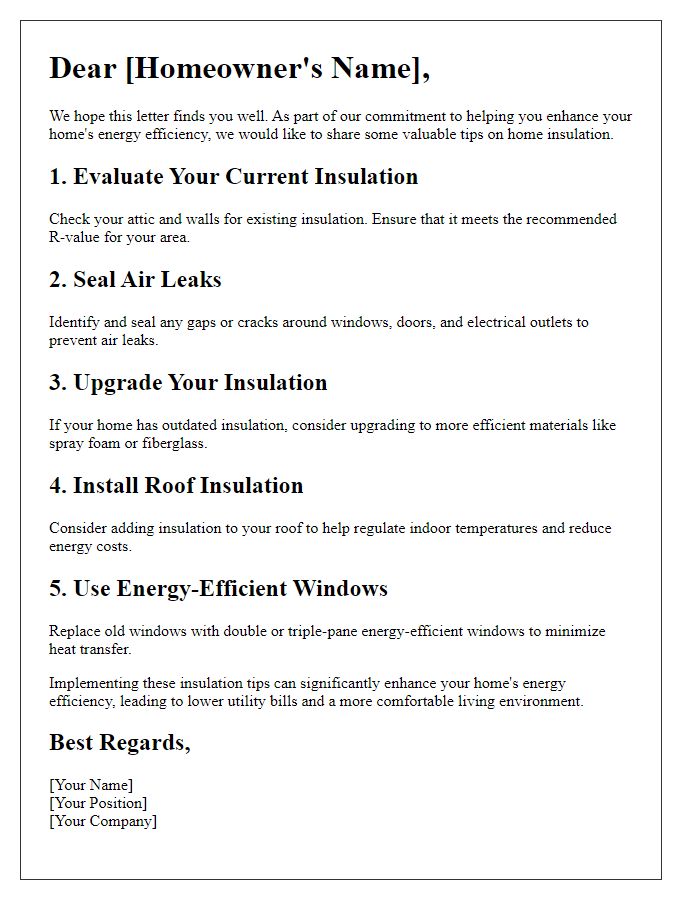Are you looking to cut down on your energy bills without sacrificing comfort? You're in luck! In this article, we'll share some simple utility energy-saving tips that can help you save money and reduce your carbon footprint. From adjusting your thermostat to utilizing energy-efficient appliances, there's so much you can doâso stick around to discover practical strategies that can make a big difference!

Personalized energy assessment
A personalized energy assessment can significantly enhance the efficiency of your home, leading to reduced utility bills and a smaller carbon footprint. A certified energy auditor will analyze your home's energy usage, typically in a detailed two to three-hour session, inspecting insulation levels, HVAC (Heating, Ventilation, and Air Conditioning) systems, and appliances. Tools such as infrared cameras may reveal temperature variations, indicating areas of heat loss or gain, particularly in attics and basements. The auditor might provide recommendations tailored to your household, including upgrading to ENERGY STAR-rated appliances, sealing air leaks, or improving insulation in key areas such as walls and roofs. Implementing these suggestions can lead to energy savings of up to 30%, contributing to both financial savings and environmental sustainability.
Peak usage awareness
Peak energy usage awareness is crucial for homeowners aiming to reduce their utility bills. Typically occurring during high-demand hours, particularly between 4 PM and 9 PM on weekdays, peak usage times can lead to elevated rates charged by energy providers. For instance, in regions like California, this can result in an increase of up to 50% in electricity costs (as per rate plans). Residents can conserve energy by utilizing programmable thermostats, which allow users to adjust heating and cooling settings according to their daily routines. Engaging in simple practices such as turning off lights in unoccupied rooms reduces energy consumption during these peak periods. Additionally, utilizing energy-efficient appliances certified by ENERGY STAR can substantially cut down on usage, representing significant savings both on monthly bills and environmental impact.
Efficient appliance recommendations
Efficient appliances significantly reduce energy consumption and lower utility bills for households. Energy Star-rated refrigerators consume up to 15% less energy than non-rated models, saving an average of $200 over its lifetime. Modern washing machines use approximately 25% less water and 30% less energy compared to older top-load models, contributing to substantial savings annually. LED light bulbs utilize about 75% less energy than traditional incandescent bulbs, lasting up to 25 times longer, thereby minimizing replacement costs and waste. Utilizing smart thermostats can optimize heating and cooling systems, potentially reducing energy usage by 10-20%, providing both comfort and significant financial savings throughout the year. Transitioning to these efficient appliances enhances sustainability while promoting a greener lifestyle.
Weatherization techniques
Weatherization techniques can significantly enhance energy efficiency in homes, reducing utility bills and improving comfort. Applying insulation (at least R-30 for attics) minimizes heat loss during winter months (temperatures dropping below 32 degrees Fahrenheit in many regions). Sealing gaps around windows and doors, using caulk and weatherstripping, prevents drafts and maintains indoor temperatures (which can fluctuate by 20 degrees or more without proper sealing). Installing storm windows or adding plastic sheeting can bolster window efficiency (potentially reducing energy costs by up to 15% annually). Furthermore, using energy-efficient appliances, such as Energy Star-rated HVAC systems, ensures optimal performance while minimizing electricity usage (with typical savings of up to 30% compared to standard models). Regular maintenance and energy audits (recommended every few years) help identify further opportunities for improvement, ensuring homes are prepared for extreme weather events, including heavy snowfall or heatwaves.
Incentive program information
Utility companies often implement energy-saving incentive programs to encourage consumers to reduce their electricity usage. Financial incentives such as rebates (up to $500) are offered for purchasing energy-efficient appliances like ENERGY STAR-certified refrigerators or washing machines. Education workshops can be available to teach homeowners about effective energy-saving techniques like proper insulation and HVAC maintenance. Additionally, smart thermostats (such as the Nest Learning Thermostat) may be provided at a reduced cost, helping households manage their energy consumption more efficiently. These programs aim to promote awareness and practical actions that can significantly lower utility bills while contributing to environmental sustainability efforts across regions.













Comments